Songbird deaths still a mystery, as state, local experts advise: Don’t promote bird gatherings
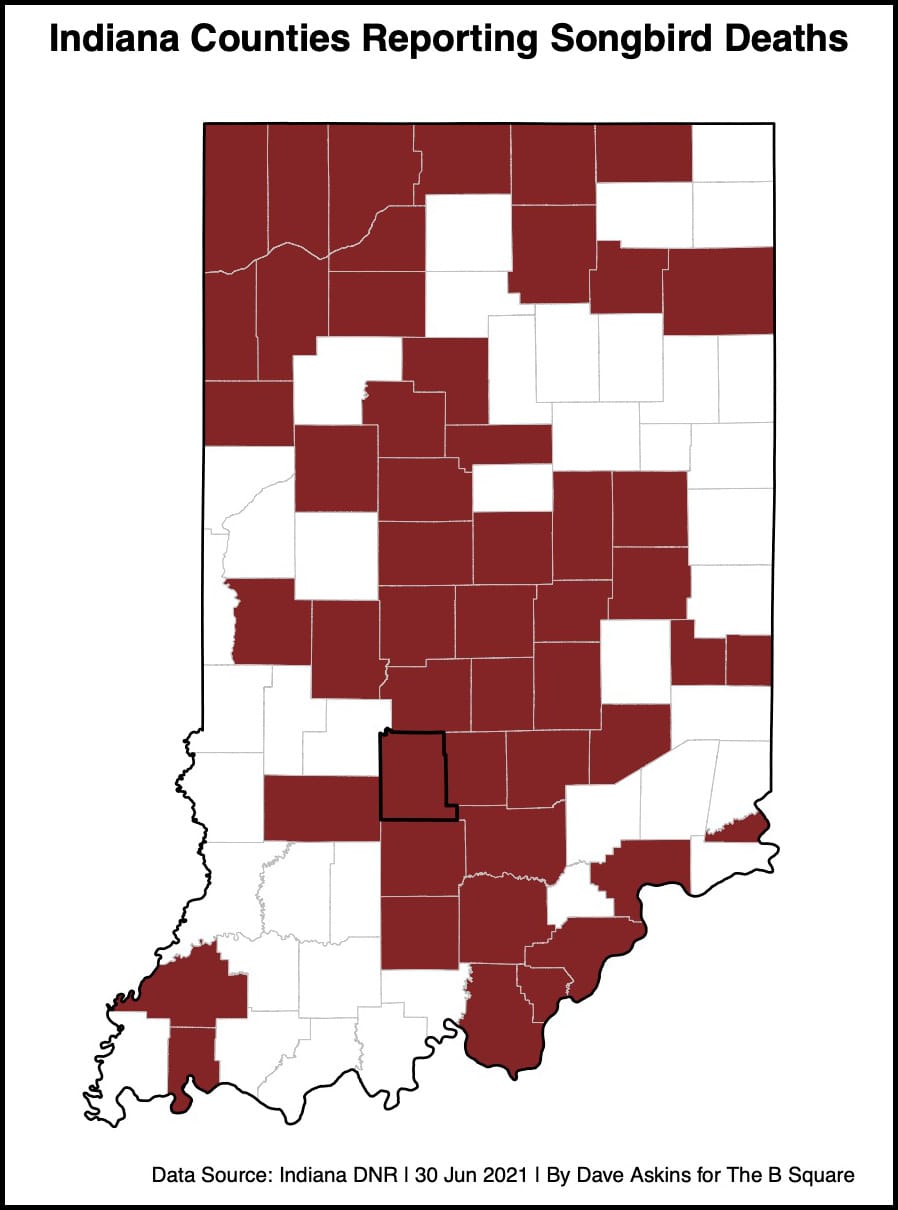
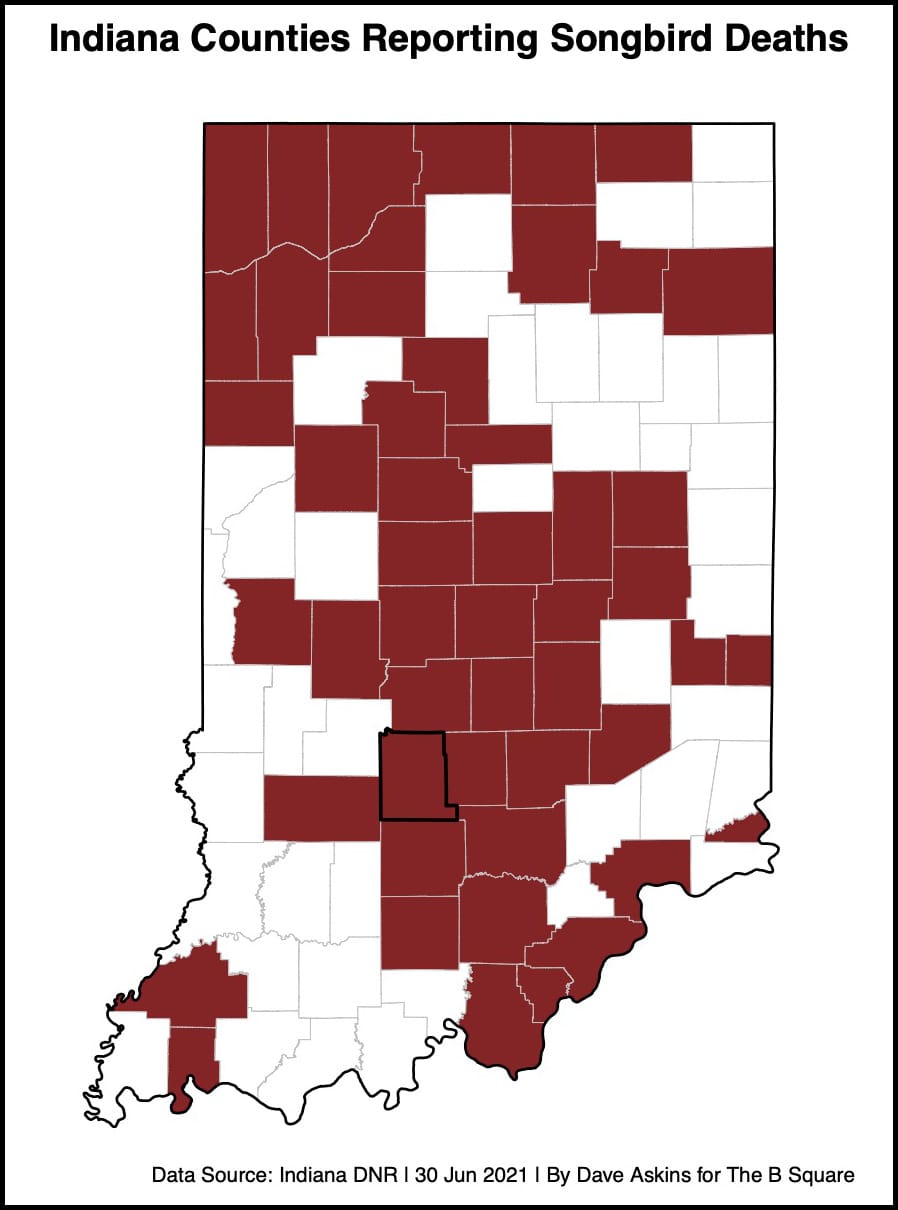
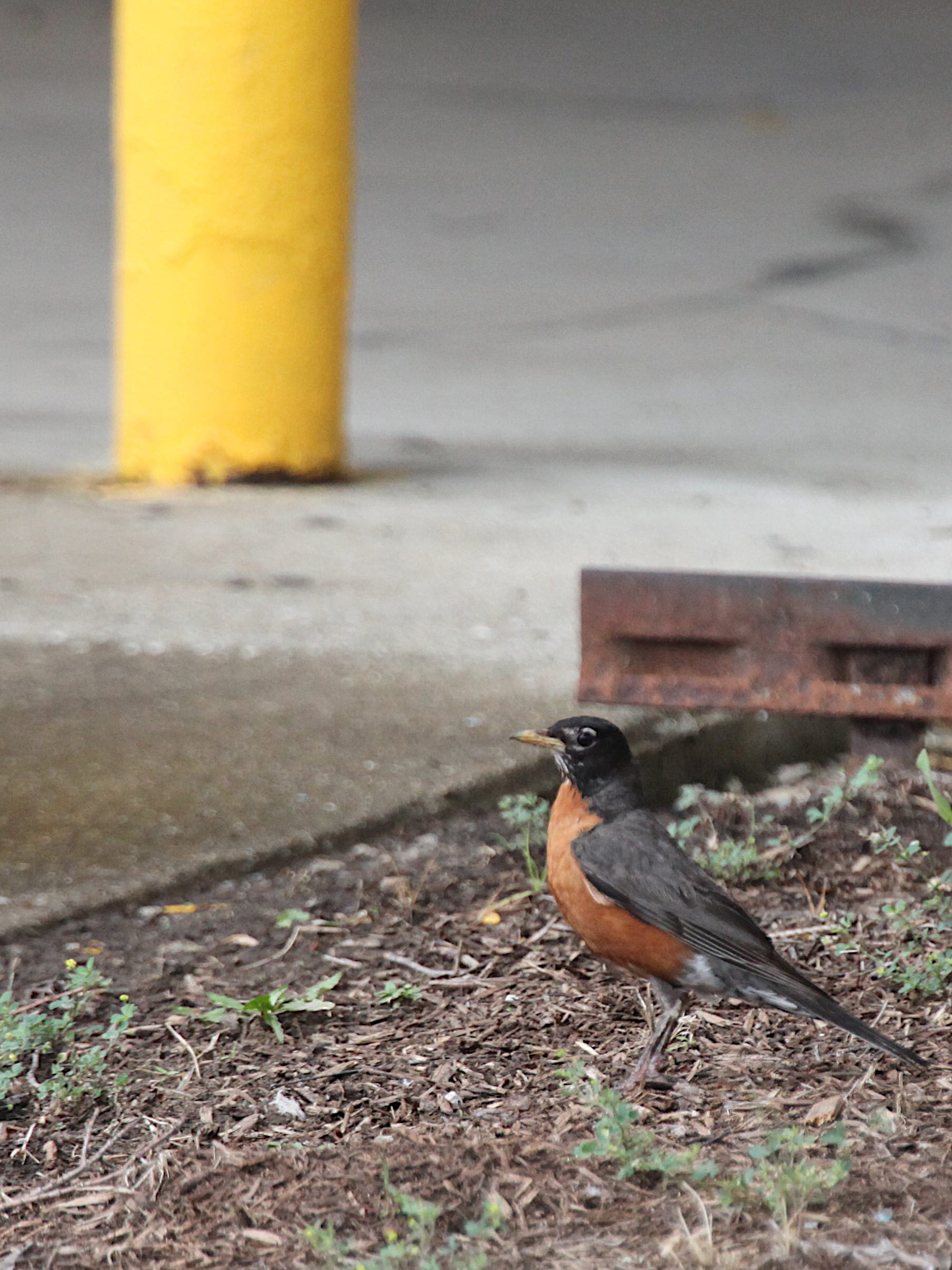
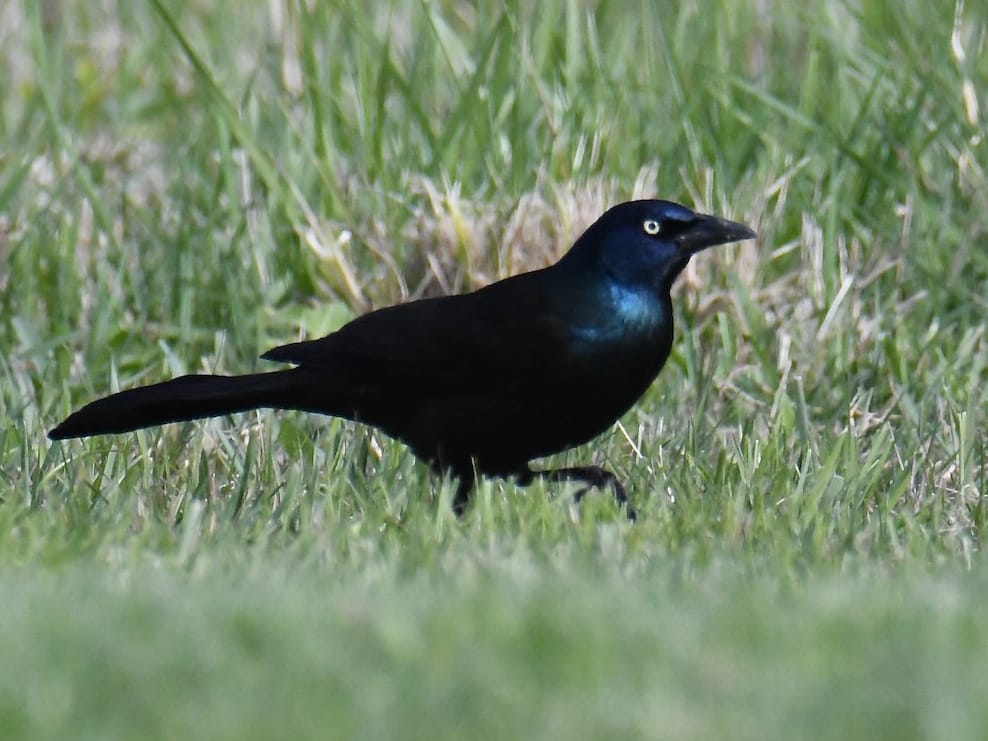
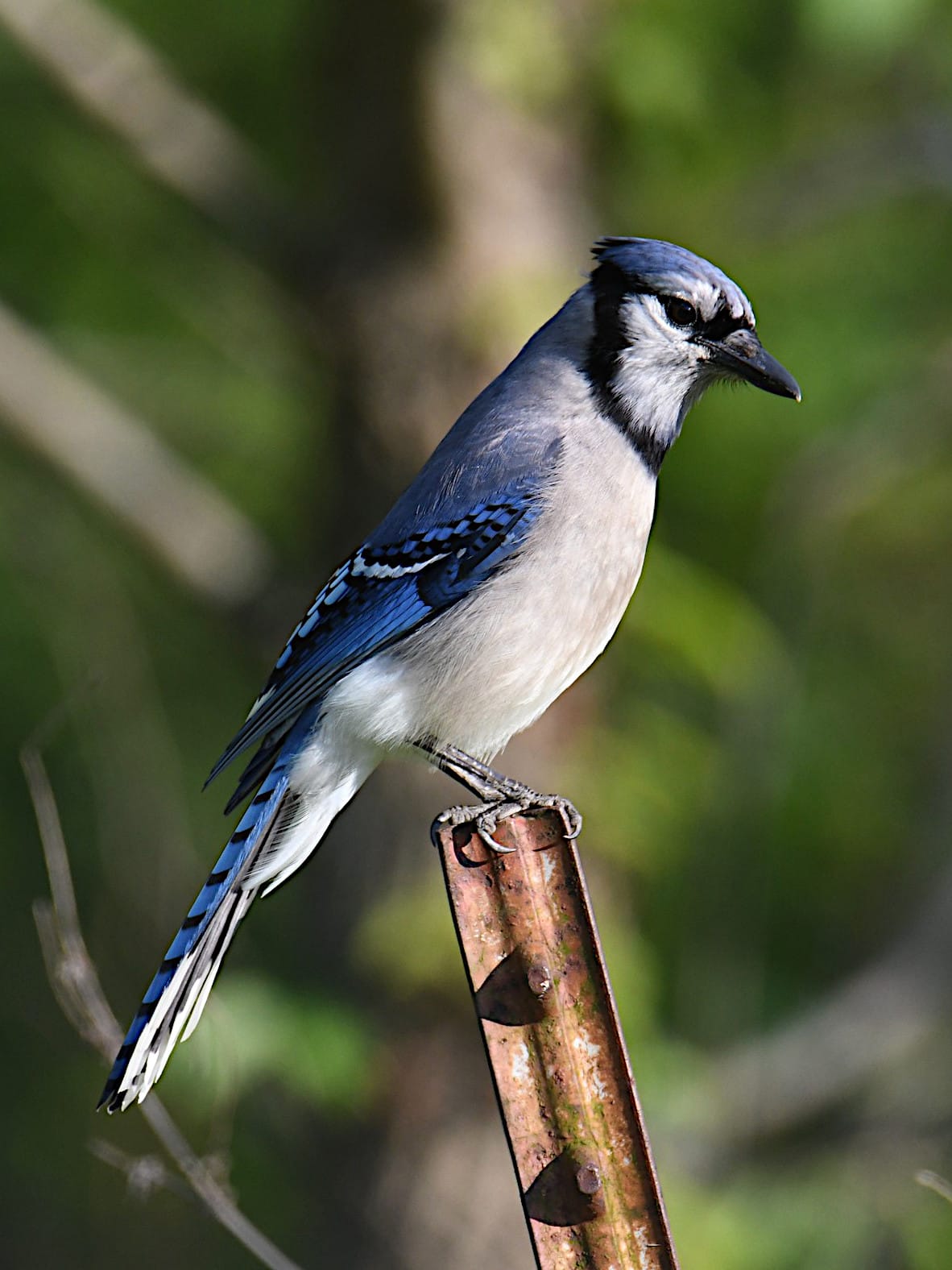
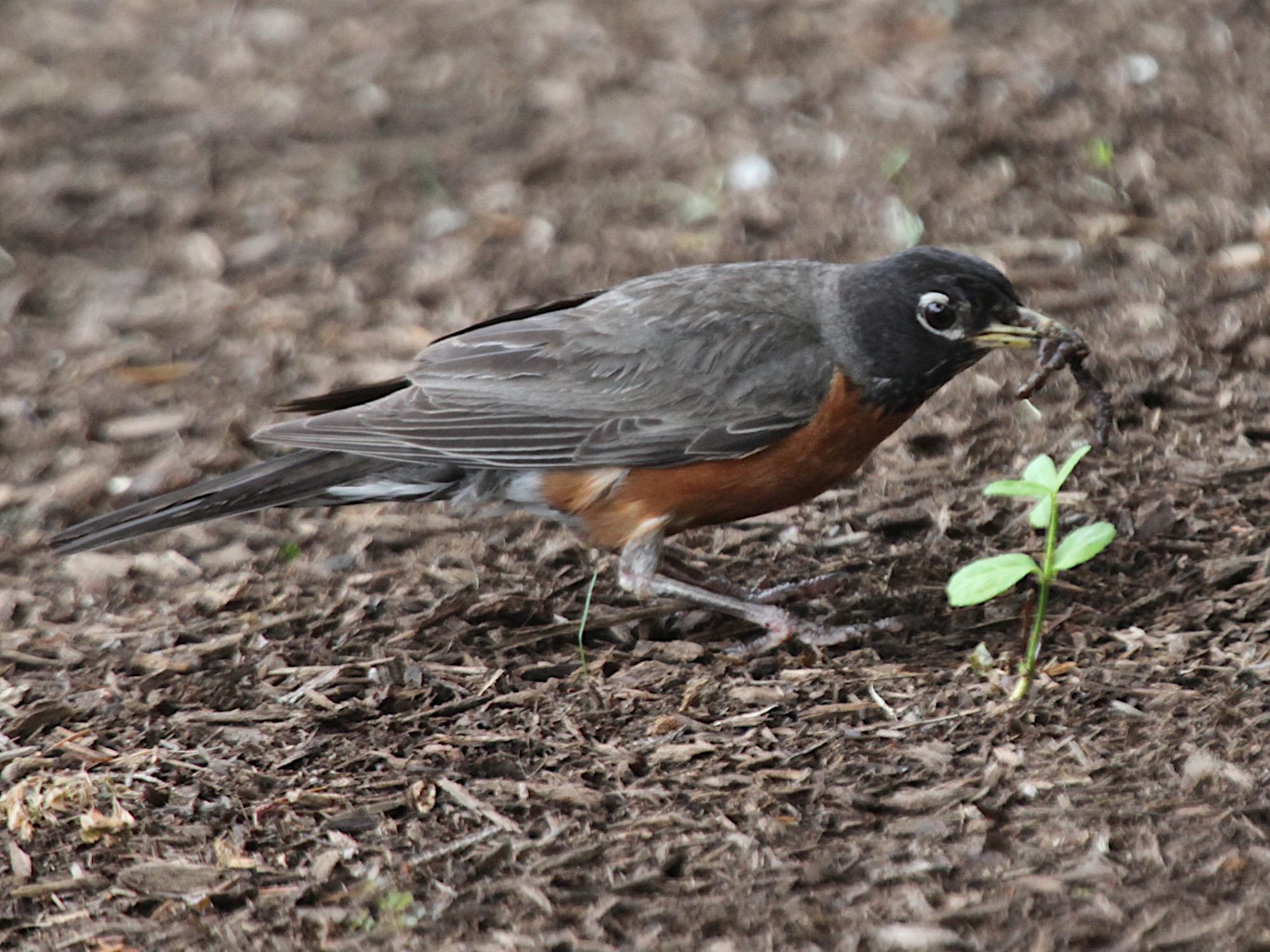
The word on Wednesday from Indiana’s department of natural resources (DNR) was that tests on dead songbirds, now reported in 50 of Indiana’s 92 counties, are still not conclusive.
So state officials still don’t know whether the phenomenon is being caused by a disease or a toxin. The DNR reports that all the birds have tested negative for avian influenza and West Nile virus.
Species of birds involved include: blue jay, American robin, common grackle, starling, northern cardinal, brown-headed cowbird.
The DNR has set up a web page dedicated to the topic of songbird deaths, with a way to subscribe to updates on the latest information.
Indiana’s state ornithologist, Allisyn Gillet wrote in an email to The B Square on Wednesday, “[W]e still do not have any conclusive results about the songbirds declining because our tests and analyses are still pending. The tests are exploring every possible cause…”
In the meantime, bird lovers are being told to remove backyard implements that encourage birds to gather—like feeders and birdbaths. [Updated July 2 at 7:08 p.m.: Indiana’s DNR has updated its page with a link to an audio recording of a Q&A with Gillet.]
Nancy Lightfoot, who’s president of the Sassafras Audubon Society, told The B Square she’s had to explain to some bird enthusiasts that it’s not enough to disinfect feeders and bird baths—those things just need to be put away for now.
Sassafras is Bloomington area’s local chapter of the National Audubon Society—which covers Monroe, Lawrence, Owen, Greene, Morgan, Jackson, Brown and Bartholomew counties.
The possibility that the unexplained deaths are being caused by bird-to-bird transmission means anything that causes birds to gather needs to be removed. Lightfoot said, “You can’t draw them together. You can’t give them a congregating place, because it’s like sending someone to a singles bar during COVID.”
During the COVID-19 pandemic, Lightfoot said, feeding the birds and watching them was one of the few activities that some people were able to enjoy. The pandemic among humans has meant a new generation of people who have learned to connect to nature through birds, Lightfoot said.
Some of her work right now, Lightfoot says, involves trying to help people accept that they won’t be able to watch out their windows as birds snack at a feeder or flutter around in a bath.
It might not be easy to understand for someone who doesn’t feed birds, Lightfoot said: “Birds bring tremendous joy to us, and we wake up to see them every day, sometimes they knock on our windows to say: Where’s our food?”
Does the lack of food from local backyard bird feeders mean birds will go hungry? No. David Rupp, a past president of Sassafras Audubon Society, who leads tours for the group, told The B Square, “Our local birds are going to get by just fine without the food that we put out for them. They have plenty of natural foods.”
Rupp said he encourages people to plant native plants, because that’s even more important than putting out birdseed.
Based on Indiana DNR descriptions of birds with “neurological signs, eye swelling, and crusty discharge around the eyes,” The B Square asked DNR officials if they were able at this point to rule out neonicotinoids as a toxin, or avian conjunctivitis as a disease. The possibility that the phenomenon was caused by Brood X cicadas, which might have been marinating in toxins for 17 years, was another scenario The B Square asked about.
State ornithologist Gillet said they were considering every possible cause, including those floated by The B Square.
An article about a possible cicada connection was published by BirdWatching magazine on Tuesday.
Quoted in the BirdWatching piece is bird ecologist with the Smithsonian Migratory Bird Center Smithsonian’s Brian Evans: “What we know is that the spatial extent, the area, of the mortality event, and the timing of the mortality event, largely matches the emergence of the Brood X cicadas.”
Evans added, “But that’s entirely correlation. We don’t know directly whether it’s causative, and we’re trying to investigate the potential links that might be there.”
About the chances that Bloomington area residents might spot a healthy specimen of one of the affected bird species, Rupp said a lot of that involves paying close attention. “What I try to do on my tours is to get people’s eyes and ears tuned into their surroundings,” he said.
Rupp continued, “And once you start paying attention, and searching for birds, it’s amazing how prevalent birds are.”
Rupp wrapped up the thought like this: “That’s one of the cool things about them is that they’re everywhere. Everywhere you go there are birds.”
One of those places where there are birds, American robins specifically, is just outside the Indiana University Poplars parking garage.
Robin photos: June 30, 2021
Click to view slideshow.




Comments ()